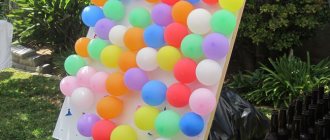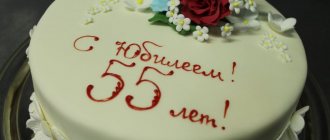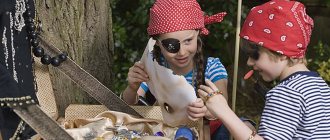The most current trend for youth parties is a quest. The quest business is thriving in cities with a population of over a million and rightfully deserves the approval of a wide audience, because interesting games reveal character traits that are often dormant at work and at home. For us, this gaming reality is an opportunity to express ourselves in a company and become more united, resourceful, and courageous. By coping with purely hypothetical difficulties, we gain peace of mind, which will be more difficult to shake by real problems. This is especially important for children, because they are facing exams that require not only knowledge, but also endurance, ingenuity, and logical thinking. All this can be developed even at the dacha. Here is a do-it-yourself country quest for children (8, 9, 10, 11, 12, 13 years old) from the editors.
Quest information
First you need to decide who this quest is intended for? This is the initial data about him for an introduction to the matter:
- A quest is a game in which participants are asked to solve a problem using clues. As a rule, you need to find something or solve the answer to a question (solve a crime, for example). Hints are located in hiding places, each of them is logically connected with the next one, one leads to the other. In the final, the participants receive encouragement, but along the way they face challenges.
- The number of tasks - we have 15 of them. This is optimal for playing the game for about 40 minutes. During this time, children will not get tired and will not lose interest in the game.
- Number of participants - 2-8. You can please your children or invite your neighbors;
- The duration of the quest is 30-50 minutes;
- The scene is a summer cottage.
- The reward for completing the quest is a set of young chemists; recruitment of a young physicist; magician's set; new gadget; board game (optional); a chest filled with sweets and souvenirs (all this can be chosen at will).
Description of tasks
(key places where you can hide hints and surprises are indicated in brackets)
- Weather forecast (birch, rowan, apple tree, your option). An original logical and mathematical task for quick thinking.
- In the garden (bucket, watering can). The players' task is to understand from the clues what object they are talking about.
- Tricky code (rake, garden bed, your option). A tricky puzzle for your ingenuity.
- Anagrams (cap, barbecue, sunglasses, your choice). You need to make 4 words from the mixed up letters and understand what object they point to.
- Fun riddles (bicycle, strawberry, gloves, your choice). Entertaining riddles that test your sense of humor and intelligence.
- Logical dominoes (garage, package, pillar, your option). A fun task for associative thinking.
- Butterfly collections (gate, stone, shovel, your option). A difficult arithmetic task for composure and concentration.
- Haymaking (path, porch, greenhouse, your option). A task for quick thinking, an unusual type of cipher: you need to compose a word by selecting letters.
- Encrypted word (shrub, staircase, front garden). Original keyword. Players need to read a keyword, each letter of which is encrypted with a picture of a tree.
- Cache (bench, car). An interesting logic task.
Attention! The set includes task templates “Weather Forecast”, “Tricky Cipher”, “Anagrams”, “Funny Riddles”, “Logical Dominoes”, “Butterfly Collections”, “Haymaking”: if the keywords do not suit you, you can replace them yourself .
View other ready-made quest kits
Quest scenario
We offer the following quest scenario for children at the dacha. The goal of the game will be to find the lost treasure left over from the old owners of this land. It turns out that a mysterious count used to live there - a bosom friend of Count Cagliostro (a world-famous sorcerer and magician). He had an estate where he kept secret materials and acquired treasures. The count's descendants carefully preserved his memory, but were never able to find the magician's main hiding place.
During the revolution of 1917, the estate was burned and razed to the ground, and the last descendants of the famous count fled abroad. Now this place belongs to your family, but the secret of the treasure has not yet been revealed. You have to find a mysterious chest where the most amazing relics and valuables of the sorcerer are hidden. A guidebook, hastily forgotten by the heirs of the estate and miraculously preserved by one of the family's devoted friends, will help you in searching for artifacts. You managed to find him, and the rest must be done by young adventurers, because, according to the will of the old count, only a child’s mind is able to get to the bottom of the truth.
After this introductory speech, you give the first card and start the quest. The contents of the cards that will lead the children to the goal, and the plot twists and turns of the game are described in the next section.
Team quest game
With the help of the “ Quest for Children on the Street” , you can conduct a quest for two or even three teams. Each task is completed in several versions, with different keywords - so that the teams have equal chances, and victory depends on the speed of reaction and intelligence of the players. And those who are planning a game for one person or one team will have a choice of the most convenient places to create a search chain.
See analogues: Indoor quest for children
Quest "Children's picnic"
Preparation of props
So, what will happen on 18 cards:
- Guide: the largest card. It is a diagram (map) of your site, lined up to search for treasure. You need to draw a labyrinth: there will be as many paths leaving the starting point as there are participants. Each one leads in the opposite direction to the others. Children must separate and each follow their own path. In the places indicated on the map (under the cart, under the porch, in the currant bushes) there should be some objects, and only at one point there should be a real clue hidden in the object. For example, a letter in a bottle, like pirates. This is the second card. The rest of the items may contain blank pieces of paper or with poems - it doesn’t matter. They're just supposed to be a distraction. Such items can be boxes, bell peppers stuffed with paper, a vase with a note, etc.
- The second card should be a task. The text is: “If you understand the places, you won’t get confused about the faces.” It should contain portraits of famous cartoon characters, athletes or historical figures (depending on the interests of the company), who should be named by the whole team in a column. The first letters of the resulting column will form a word indicating the next search point (the burial place of the clue). For example, GREENHOUSE: Thor, Emelya, Peter Parker, Loki, Elon Musk, Lebel Princess, Arnold (from the cartoon “Hey Arnold”).
- The third card is in a greenhouse (preferably also in a bottle to preserve the surroundings) and represents the following task: you need to change (or remove) 1 letter in the words so that you get a different word. For example, fruit = blanket. The first letters of the resulting words should give the name of the next cache. Each word must have a hint before it. For example, BARREL: tok - side (a person has a left and a right...), aphid - Olya (female name, similar to the male name "Oleg"), khan - vat (a large pot where witches brew a potion), stink - horse (horse male), barque - arch (building structure of a semicircular shape - you can attach a drawing).
- The fourth card should be in a sealed bottle in a barrel. There will be a code on it - a sequence of numbers. They can be converted into letters using the Russian alphabet: each number has its own letter. This is how the next location will be encrypted. For example, BARN is 19, 1, 18, 1, 11. The one who guesses first wins a prize next to the next clue. It could be sweet.
- The fifth card represents an example to be solved. The resulting number will give the host (you or, say, a neighbor) the right to name the next place. This is a code meaning for those who still keep the secret of the count. For example, 19+199-55(66+183):67x78-23. The example or equation must be consistent with the children's school curriculum.
- The sixth card involves the help of adults. You need to find someone at your dacha who understands car brands (this is again an example; you can choose clothing brands or varieties of lilacs). The guys must persuade an adult to help them (let them fulfill one of his wishes - for example, pick 10 strawberries or currants and bring them to him). In return, he writes in capital Russian letters the name of the car brand, which is present in the picture in the form of a small emblem. The first letters of the cars are added up and indicate the next location. For example, TAZ: Toyota, Audi, ZIL; PIT: Jaguar, Mustang, Alfa Romeo.
- Seventh card. She asks for "help from a friend" over the phone. Agree with a relative and let him wait for a call. It will contain questions about the past of the mysterious count. The guys need to come up with their own answers to them and vote for the best one. This is what needs to be voiced to the mysterious relative. He will accept any answer and reward the participant with the next hint - indicating the place where it is stored. For example, what did the count wear? what animals did he love most and why? which country did the Count most like to visit and why? What secret order did he join in Russia?
- The eighth card is located in the location indicated by the relative. It lists numbered questions, the answers to which form a description of the place where the next cache is hidden. For example, what is located at the entrance to personal quarters (door)? Where are the houses located (on the street)? What is the woodcutter made of in the Emerald City (iron)? Answer: gate. You need to place the following clue next to the gate.
- The ninth card involves searching the garden. Children need to find a herb or flower with a rare and unknown name. The next clue will lie nearby. While solving the problem, you can offer an encyclopedia or tablet. There is an option to “ask grandma,” but for this you need to complete a task: collect berries or vegetables, as many as she asks.
- The tenth card involves playing with puzzles. Open words indicate the direction of where to go next. For example, a picture of a throne and the letters A and M (there). Then an image of a viper, the letter O, a picture with a tiger, the letter O, a picture with an axe, the letter O, a picture with a raven, the letter I, a picture with a stool (cooking). 3.14rog (pie). We're talking about the kitchen. There you need to put the message in a visible place.
- This card lists poems by different poets. You need to indicate which authors wrote them and make a numbered list. Next, you need to form a word from the first letters of their last names. It will indicate the location of the new cache. For example: FLOWER FLOWER - Koltsov, Lermontov, Usachev, Mayakovsky, Batyushkov, Akhmatova. To complete the task, you are allowed to Google.
- This card should contain a link to the Instagram of one of the parents. This place is clearly visible in the last photo. For example, you can take a photo in front of a haystack.
- The new card requires knowledge of English. There will be a description of the place where another message is stored. For example, Your family members often gather in this place when they want to spend time in the fresh air, enjoying fragrant tea. This could be a gazebo or an outdoor table.
- There will be a map on this card again. This time she will indicate the location of the prize.
- On card 15 you must congratulate everyone on completing the quest. For example, Count Sergeev would be proud of you if he had the honor of attending this dinner party. I knew that his legacy would go to the smartest, bravest, and most resourceful adventurers with noble souls. I wish you to continue to increase your intellectual superiority in order to achieve what you want and break records!
Present!
Game for children “Funny Daisy” (an interesting version of the game “Fanta”) - ready-made cards for making “Daisies” (pdf file)
- 56 “petals” with fun tasks (all task options are given below)
- heart with a funny face
Task options:
Show
- Draw a bee collecting nectar from a flower
- Depict the gait of a person moving on a slippery road
- Hide behind the back of a chair and shout loudly 3 times: “I’m completely fine!”
- Sit down several times, holding your ears with your hands
- Depict the movements and sounds of a playful kitten
- Depict a boiling kettle with pantomime and sounds
- Hold your nose with your hand and say the phrase: “I have the most pleasant voice in the world!”
- Stroking yourself on the head and stomach at the same time, but in different directions
- Looking in the mirror and not laughing, say the phrase 5 times: “What beautiful eyes I have!”
- Portray an athlete so that others can guess the sport
- For two minutes, be a “mirror” of another player and repeat exactly all his actions
- You're lucky - the whole company takes the rap for you: everyone comes up to you and says nice words
- Talk about elephants for 1 minute
- Remember 10 words starting with the letter “B”
- Wave your arms, spin around and at the same time shout out: “I am a butterfly!”
- Blindfolded, determine by touch what object the presenter put in his hand
- Draw a dancing robot
- Approach any of the players, make a scary face and say: “Well, here we are!”
- Explain how to make scrambled eggs without saying a word
- Come up with an affectionate word for each of those present (for example, “chick”, “cat”...)
- Sit on a balloon so that it bursts
- Say the phrase: “I love to dance” in different intonations (joyful, sad, indifferent, surprised)
- Walk on all fours around the room, squealing: “I’m the only lunar rover, peep, pip...”
- Ask someone for food, pretending to be a cheerful mongrel.
- Stand on a chair and tell about your life in three sentences
- Sing any song with 3 matches held in your teeth
- Choose any two players and perform an Aboriginal dance together with them
- Bow to 5 players in different ways without repeating yourself
- Walk around the room, taking three steps forward and two steps back.
- Draw your portrait with your left hand
- Draw a portrait of any player with eyes closed
- Tell everyone: “I’m in a bad mood!” and sit for 1 minute with an angry expression on your face (other players should try to cheer you up)
- Place nuts or caramels behind your cheeks and say a tongue twister: “Mom washed Mila with soap. Mila didn't like soap."
- Play the pan pretending to be an African
- Within three minutes, quickly answer questions from other players, but you cannot say “yes”, “no”, “I don’t know”
- Portray a capricious child who demands his parents buy him a toy
- Take water into your mouth and try to hold it for one minute (other players should make you laugh)
- Draw a sculpture and stand for several minutes without moving. Other players can approach and change the pose of the “sculpture”.
- Make at least one player laugh
- Eat a piece of lemon and not wince
- Pantomime an octopus
- Draw a scary monster
- Walk through the room like it's a minefield
- Try to bite your elbow
- Call your parents and crow into the phone 3 times
- Portray a fairy-tale hero so that other players can guess
- Use pantomime to portray an annoying fly
- Praise yourself in a humorous manner - explain to other players why they should be friends with you
- For several minutes, pretend to be an alien and try to talk to other players in the “alien” language
- Show with pantomime how a chicken hatches from an egg and how it takes its first steps
- Eat any fruit without helping yourself with your hands
- Talk like a robot for three minutes, asking questions to other participants in the game
- Praise your neighbors (players on the left and right)
- Draw 2 objects starting with the letter “O” for other players to guess
- Sing any song while holding your nose with your hand
- Organize an “animal choir”: select several players and sing a well-known song together, replacing all the words in it with the sounds “woof-woof”, “oink-oink”, “car-car”. “kva-kva”, “quack-quack”, etc.) [collapse]











